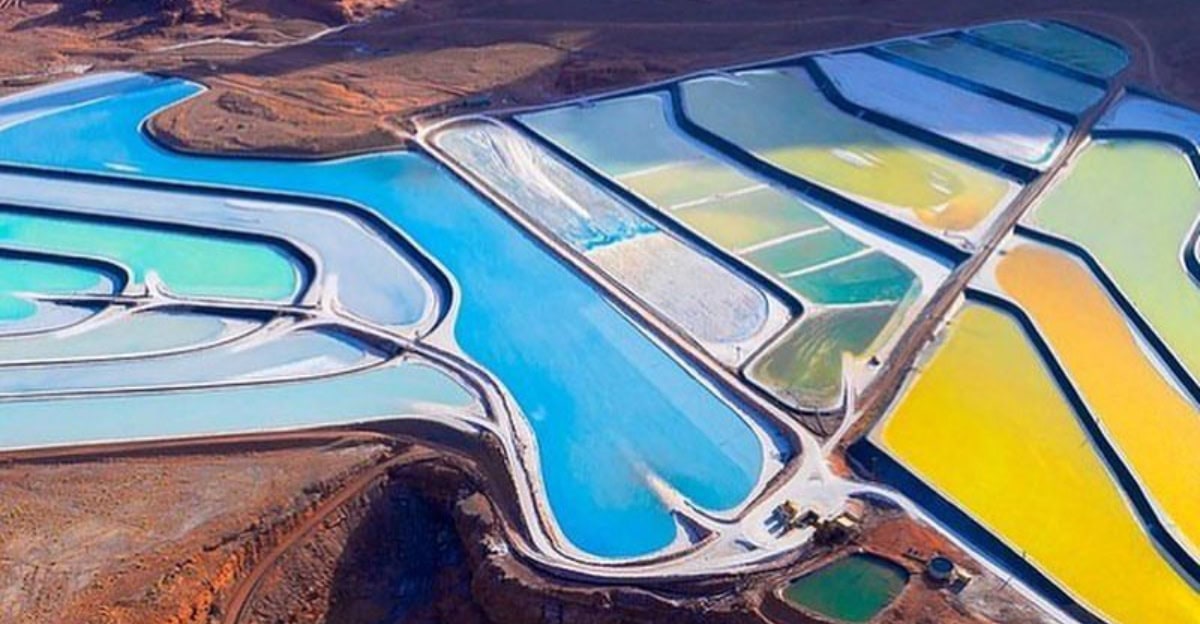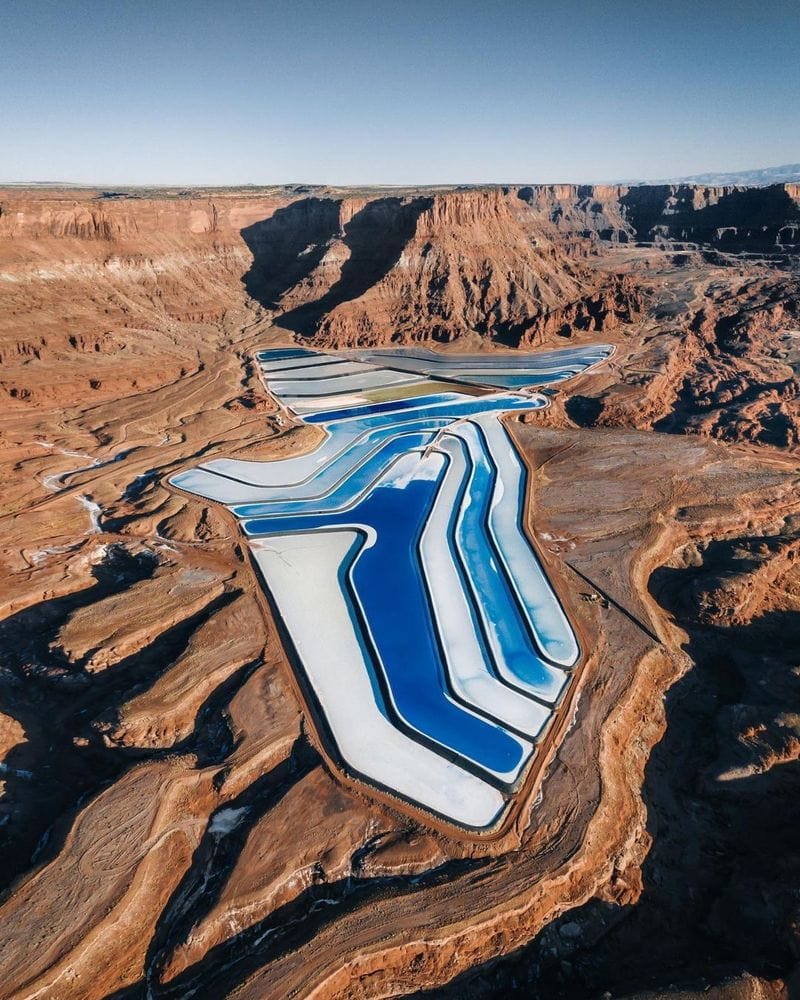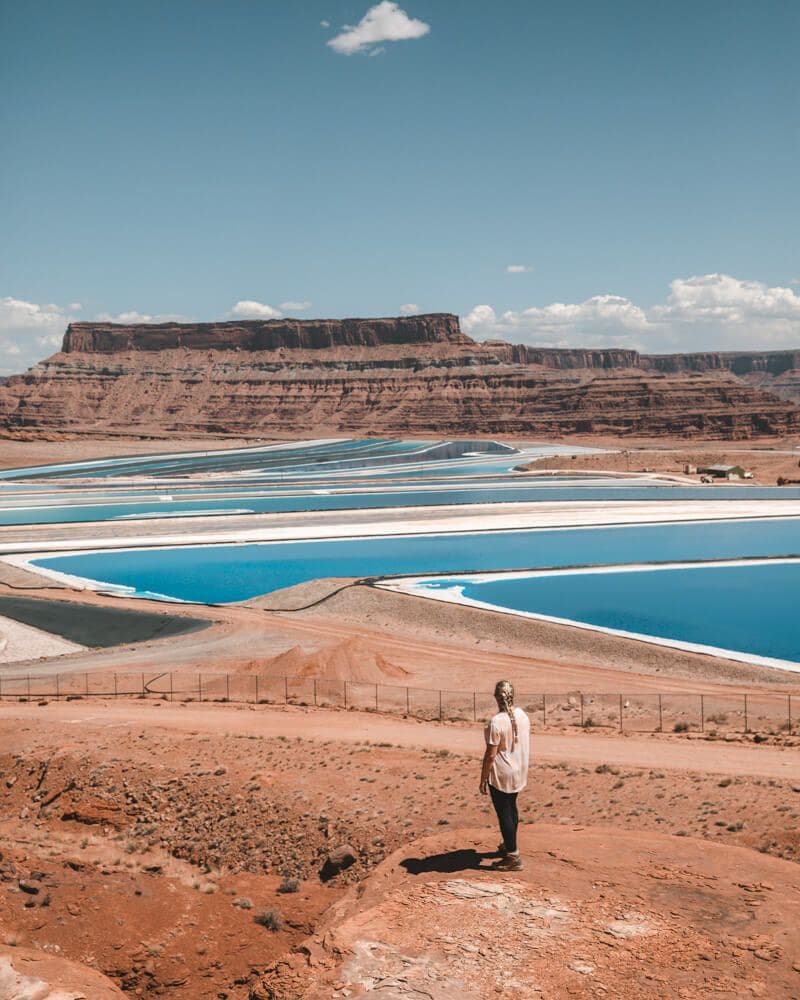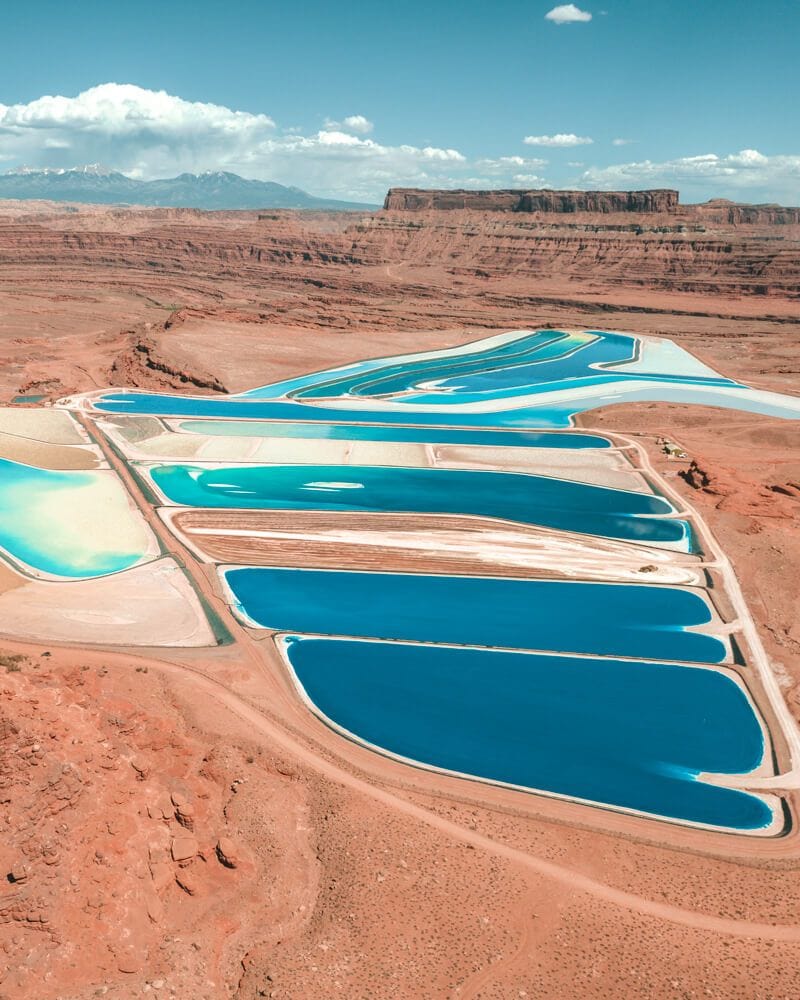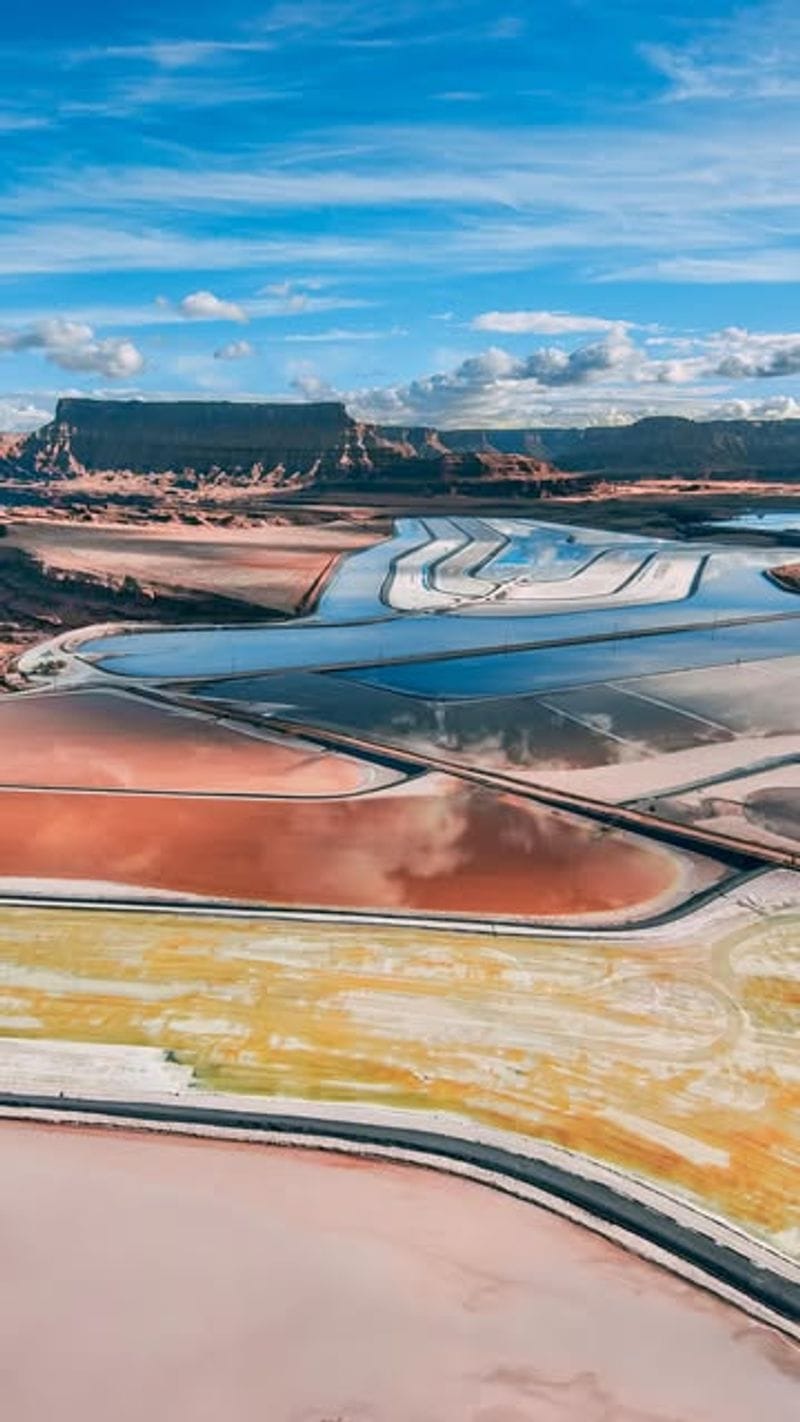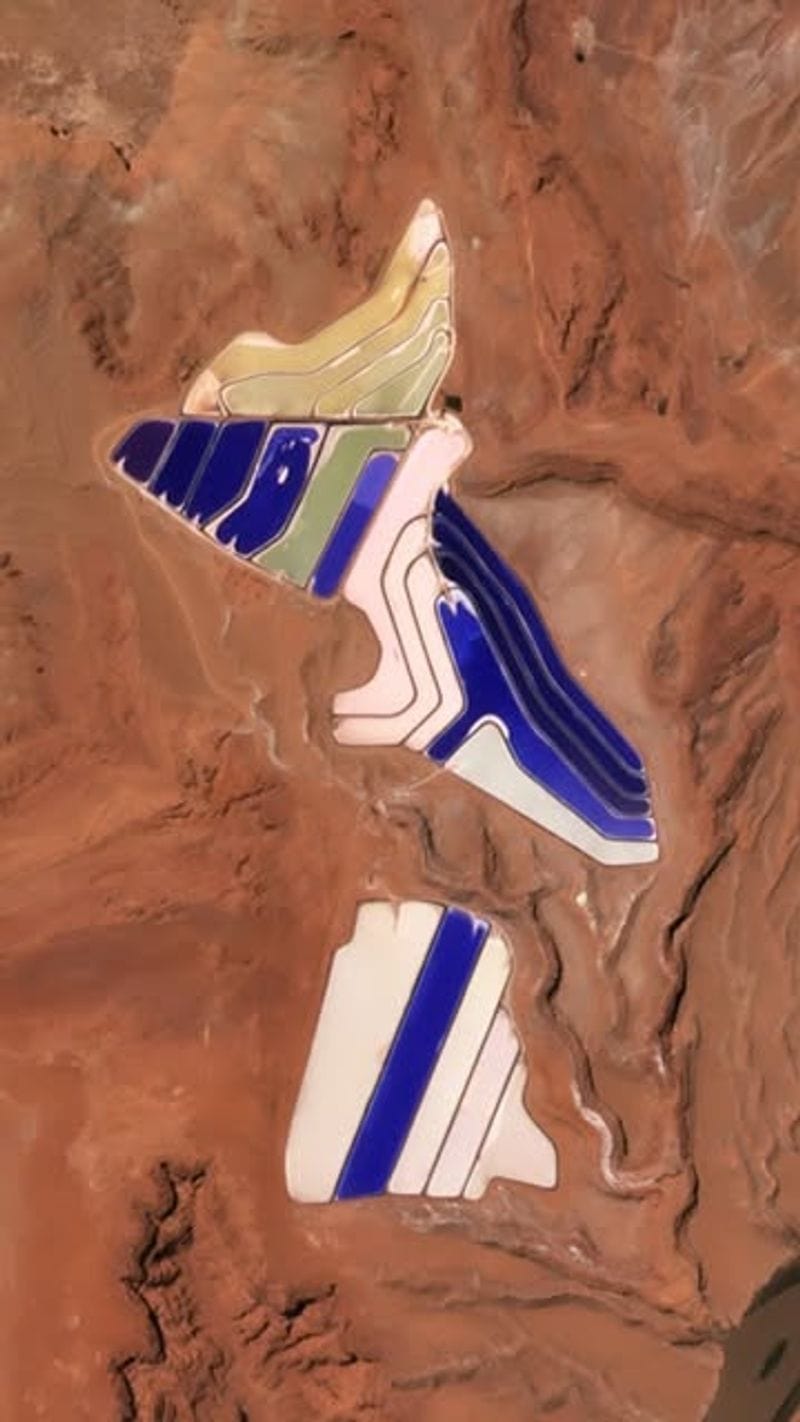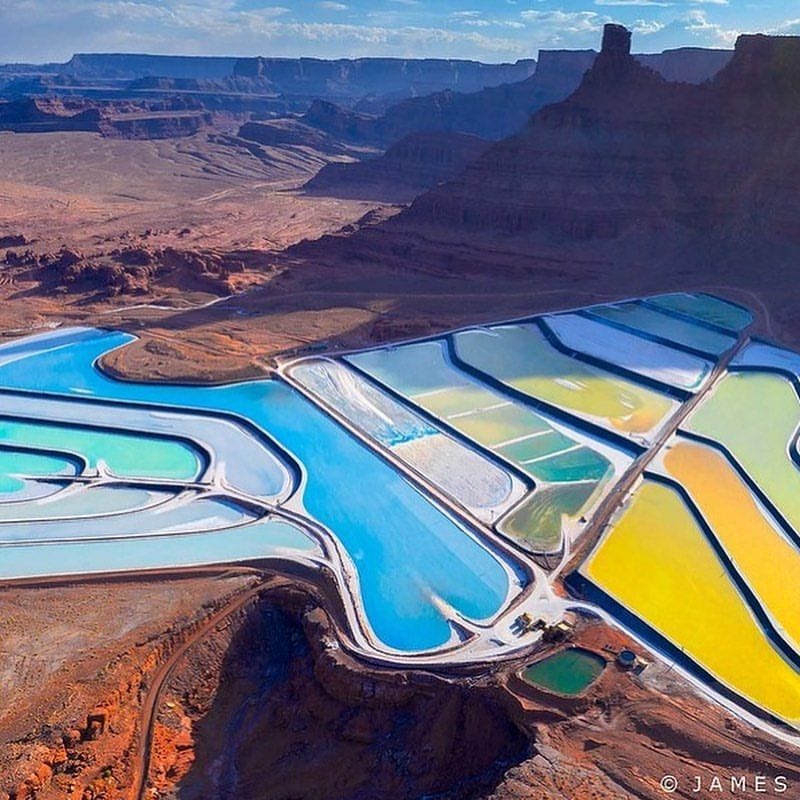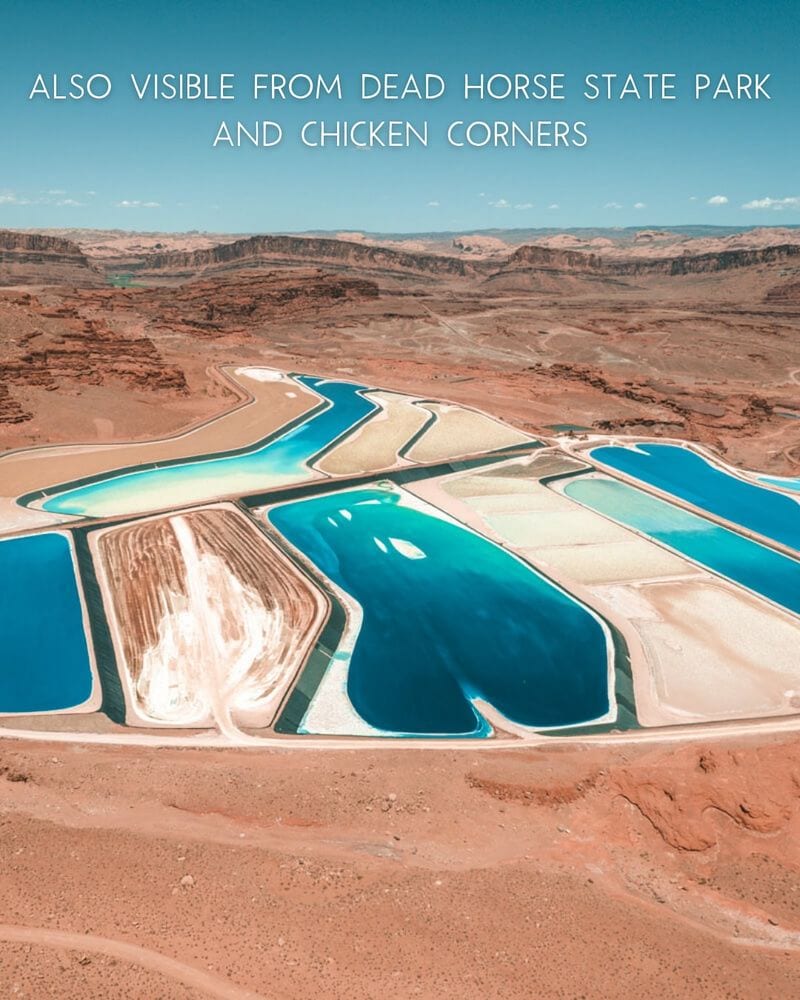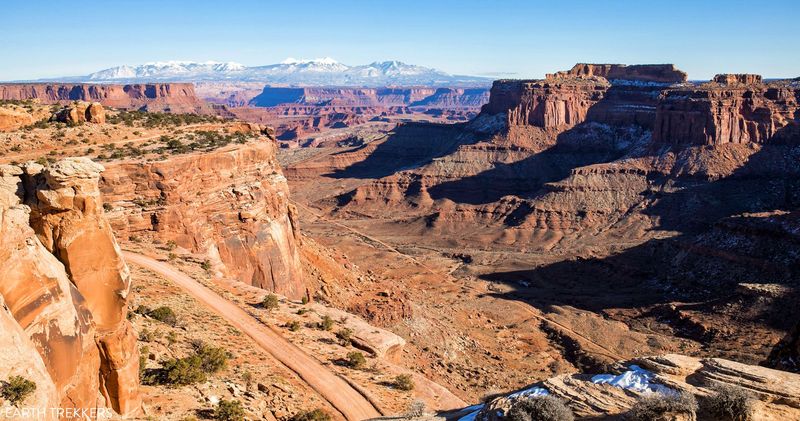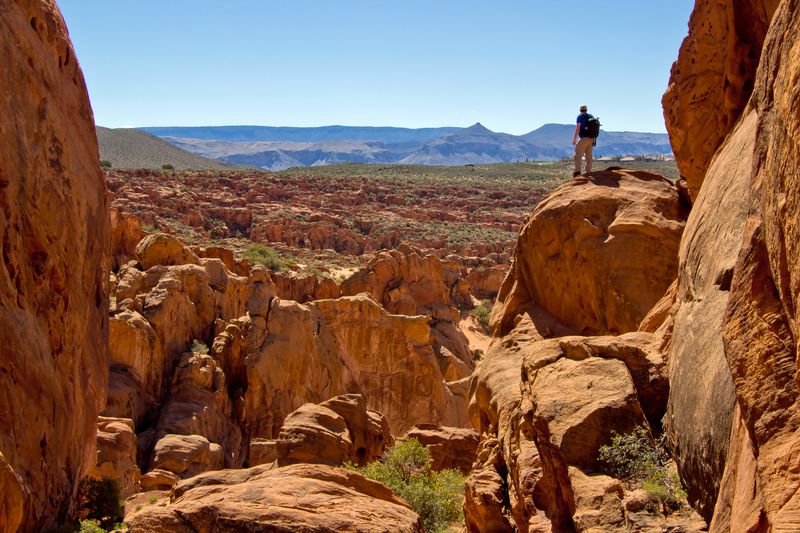Discover the mesmerizing electric blue pools near Canyonlands, Utah. Known for their surreal colors, these pools are not only a visual delight but also have an intriguing story behind their existence. Positioned outside the famous Canyonlands National Park, they are part of Intrepid Potash’s operations and can be admired from various viewpoints. This blog provides you with insights into these fascinating sites, offering tips on the best vantage points and the science behind their captivating hues.
1. What the blue pools actually are
The electric blue pools near Canyonlands are solar-evaporation ponds used to harvest potash, or potassium salts, from underground brine in the Paradox Basin. The vivid blue color comes from a dye added to the water, which absorbs more sunlight and speeds up evaporation. This process gives the ponds their surreal and otherworldly hue. The stark contrast between the bright blue pools and the surrounding desert landscape creates a mesmerizing visual spectacle. These ponds play a crucial role in potash production, an essential component for fertilizers, helping to sustain agricultural activities worldwide.
2. They’re not inside Canyonlands or Arches
These vibrant blue ponds are not located within Canyonlands or Arches National Parks. Instead, they are part of Intrepid Potash’s Moab operation along the Colorado River corridor. Visitors can view them from public roads and overlooks, making them accessible without venturing into the national parks themselves. The contrast of industrial activity amidst the natural beauty of Utah’s desert offers a unique sightseeing experience. A visit provides insight into the region’s industrial ingenuity and its ability to coexist with the stunning natural environment that surrounds it.
3. Best birds-eye viewpoint: Dead Horse Point State Park
For the best bird’s-eye view of the electric blue pools, head to Dead Horse Point State Park. From the park’s rim overlooks, you can clearly see the blue ponds laid out below, a sight that often takes visitors by surprise. The state park is a short drive from Moab and offers stunning views of the surrounding red rock landscape. There is a day-use fee of $20 per vehicle, but the breathtaking vistas make it worthwhile. It’s a photographer’s dream, providing dramatic contrasts and expansive views of Utah’s iconic scenery.
4. Closest roadside look: Potash–Lower Colorado River Scenic Byway (UT-279)
The Potash–Lower Colorado River Scenic Byway (UT-279) offers the closest roadside view of the electric blue ponds. This 17-mile scenic byway hugs the Colorado River, running from US-191 to the potash plant. Along the way, visitors can enjoy rock art, dinosaur tracks, and towering cliffs. Numerous pullouts make it easy to stop for photos, though travelers should remain behind fences for safety. This route combines natural beauty with industrial intrigue, making it a unique drive filled with opportunities for exploration and discovery.
5. A classic Moab combo drive
Adventure seekers often combine a drive down Canyonlands’ Shafer Trail with a return trip via Potash Road. This route threads the canyon above the blue ponds, offering breathtaking views. No day-use permit is required for Shafer Trail or Potash Road, but a high-clearance 4WD vehicle is recommended for most Canyonlands backcountry roads. The journey provides not only a thrilling driving experience but also a chance to see some of the most stunning landscapes Utah has to offer, blending adventure with the natural beauty of the region.
6. Why the color changes
The color of the electric blue ponds changes as they evaporate over a period of months. As the brine depth and composition shift, the water ranges from deep electric blue to paler shades. NASA notes that there are 23 ponds spread across approximately 400 acres at the Moab site. This transformation is a natural part of the potash production process and adds to the dynamic visual appeal of the ponds. Observing these changes provides insight into the scientific processes that contribute to the ponds’ vivid and variable colors.
7. When to photograph them
The best time to photograph the electric blue ponds is during midday when clear sunlight enhances their vibrant color. However, sunrise and sunset offer spectacular lighting for the surrounding canyons at Dead Horse Point. The color of the ponds remains vivid year-round, as it depends on the dye and evaporation stage, rather than the season. This makes them an attractive subject for photographers at any time. Viewpoint access might vary seasonally, so planning ahead ensures the best photographic opportunities.
8. Do not swim or trespass
While the electric blue ponds are a visual delight, they are industrial facilities on private or leased land. Visitors should enjoy the views responsibly from designated overlooks, public pullouts along UT-279, or air tours that offer aerial perspectives. Swimming or trespassing is prohibited to ensure safety and protect the operations. Respecting these guidelines helps preserve the unique beauty of the area and ensures that future visitors can enjoy the stunning sights without disruption.
9. How they make potash here
In the heart of Utah’s desert landscape lies a bustling hub of potash production. These pools, shimmering with electric blue hues, are part of a large-scale mining operation. Potash, a key ingredient in fertilizers, is extracted here using solar evaporation. The intense sunlight and dry air work together to crystallize the mineral, leaving behind these stunning azure pools. Visitors can witness this intricate process from a safe distance, gaining insight into the region’s industrial backbone. This site highlights the delicate balance between natural beauty and human industry, all set against the backdrop of Utah’s rugged terrain.
10. Pair with Arches and Canyonlands in one day
Why limit yourself to one park when you can explore both Arches and Canyonlands in a single day? Start your morning at Arches, marveling at its iconic rock formations like Delicate Arch. As the sun reaches its zenith, transition to the surreal landscapes of Canyonlands. The proximity of these parks allows for a seamless adventure, showcasing the diverse beauty of Utah’s desert. Traverse scenic drives, hike short trails, and capture unforgettable vistas. This day’s journey offers a comprehensive taste of the region, blending natural wonders with the thrill of exploration.
11. Respect desert rules
The desert is a fragile ecosystem, demanding respect from all who traverse its vast expanses. With its delicate flora and fauna, visitors must adhere to strict guidelines to preserve this unique environment. Signs remind travelers to stay on designated paths, pack out all trash, and refrain from disturbing wildlife. This respect extends to the cultural heritage sites scattered throughout the area. By following these rules, visitors help maintain the desert’s pristine condition, ensuring future generations can enjoy its untouched beauty. It’s a shared responsibility that enhances the experience for everyone.
12. Why this spot is “between the parks”
Nestled between two of Utah’s most famous national parks, this spot offers a strategic vantage point for exploring the region. The phrase “between the parks” underscores its unique location, providing easy access to both Arches and Canyonlands. Visitors often use this area as a base camp, enjoying the convenience of proximity without the crowds. This location serves as a crossroads, where diverse landscapes and adventures converge. It embodies the spirit of exploration, inviting travelers to venture further into the breathtaking Utah wilderness while offering a serene escape from the hustle and bustle.
